A. Brief overview of the housing situation in Kenya
Kenya, like many rapidly developing nations, grapples with a housing crisis fueled by a burgeoning population and urbanization. With millions seeking shelter, there is a pressing need for innovative and cost-effective housing solutions to address the growing demand.
B. Importance of affordable housing
Affordable housing is not merely a matter of shelter; it is a cornerstone of societal well-being. Accessible and reasonably priced housing fosters stability, reduces poverty, and enhances overall living standards. Recognizing the profound impact housing has on various aspects of life, there is a critical need to make homeownership more attainable for a larger segment of the population.
C. Introduction to cheap house designs as a solution
In response to the housing challenge, the adoption of cheap house designs emerges as a pragmatic solution. These designs prioritize efficiency, cost-effectiveness, and sustainability without compromising on the essential aspects of comfortable living. This article delves into the characteristics, benefits, and challenges of cheap house designs, shedding light on their role in transforming Kenya’s housing landscape.
II. The Need for Affordable Housing in Kenya
A. Growing population and urbanization
Kenya’s population is rapidly urbanizing, leading to increased demand for housing in cities and towns. The strain on existing infrastructure necessitates the development of affordable housing solutions to accommodate the expanding populace.

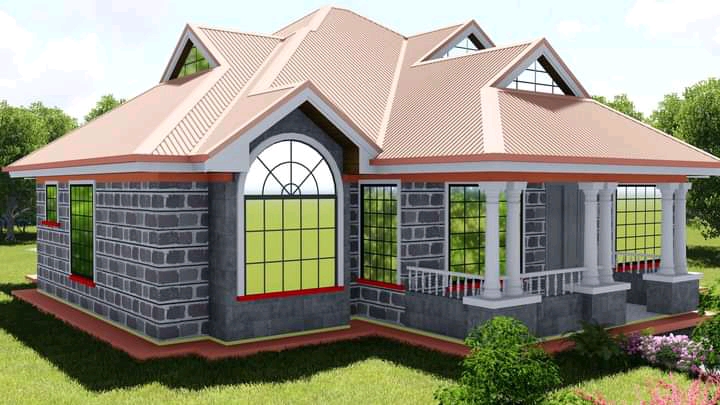
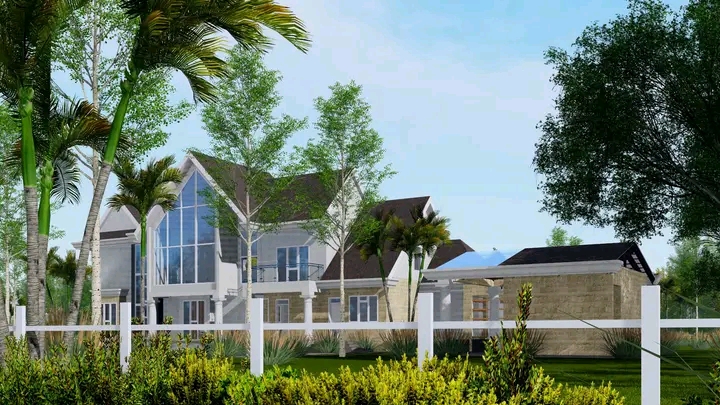
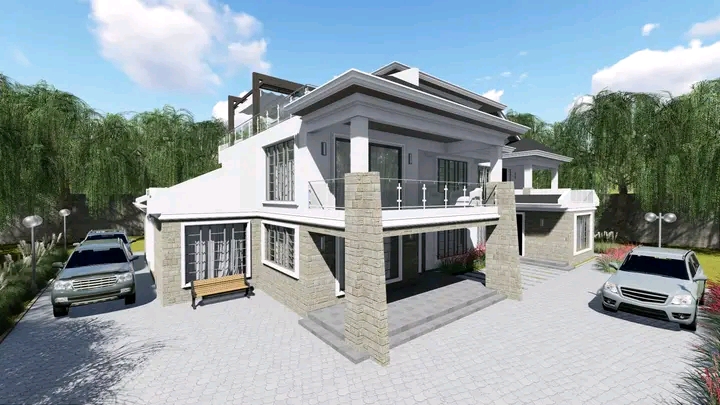
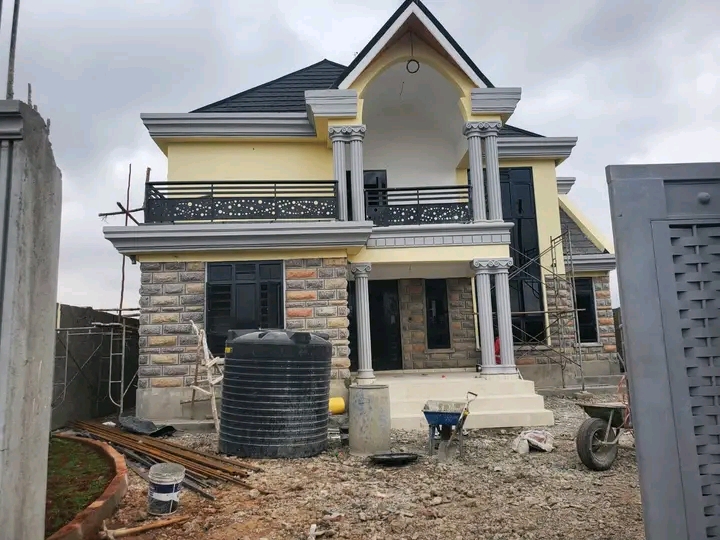
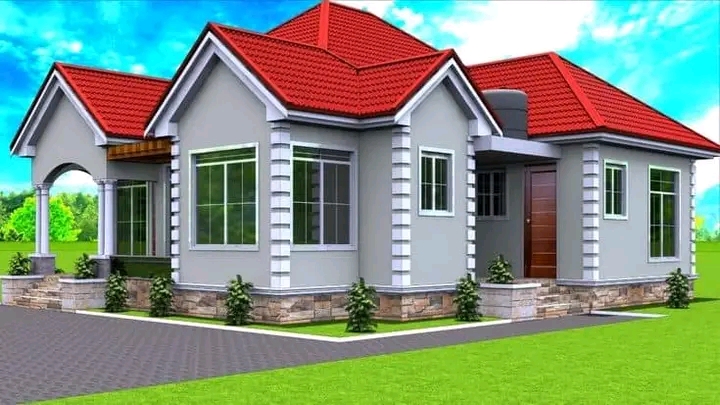
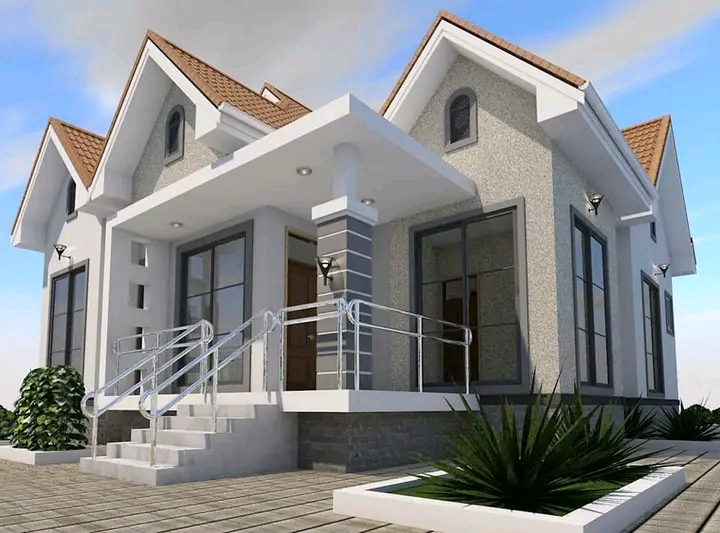
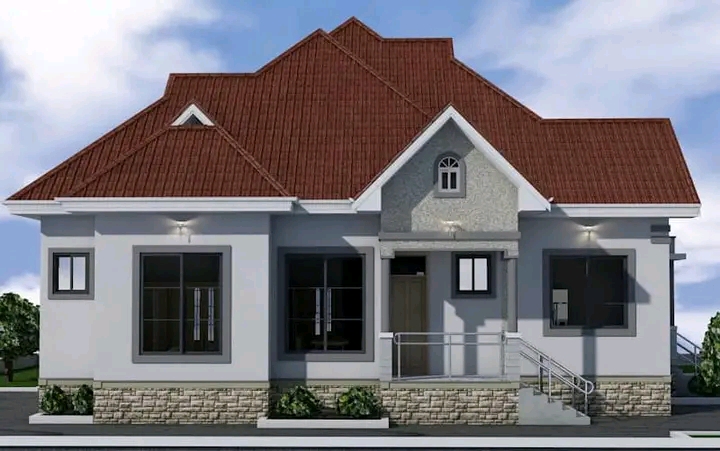
B. Economic factors affecting housing affordability
Economic challenges, including unemployment and inflation, contribute to the affordability crisis. Low-income families find it increasingly difficult to secure housing, emphasizing the need for cost-effective alternatives.
Related Post: MOST BEAUTIFUL AND CHEAPEST HOUSE DESIGN IN KENYA
C. Current challenges in the housing sector
The housing sector faces challenges such as high construction costs, limited access to financing, and inefficient land-use policies. These hurdles hinder the development of affordable housing and underscore the importance of exploring innovative solutions.
Related post: Why the Design and Build Concept is Ideal for Private Developers
III. Characteristics of Cheap House Designs
A. Cost-effective materials
Cheap house designs prioritize the use of sustainable and locally sourced materials. By embracing recycling and repurposing, these designs minimize costs while contributing to environmental sustainability.
House Plans in Kenya Per Categories
Flat Roof House Designs
Five Bedrooms House Plans
Church House Plans
Bungalow House Plans
Bedsitters
Apartment House Plans
Three Bedrooms House Plans
Rental
One Bedroom House Plans
Maisonette House Plans
Four Bedrooms House Plans
B. Simple and efficient architectural designs
Efficiency is key in cheap house designs. These designs focus on creating small yet functional spaces, optimizing every square foot to meet the essential needs of inhabitants without unnecessary frills.
C. Energy-efficient and eco-friendly features
Sustainability is a core tenet of cheap house designs. Integration of renewable energy sources and water conservation techniques not only reduces utility costs but also lessens the environmental impact of housing developments.
II. The Need for Affordable Housing in Kenya
A. Growing Population and Urbanization
Kenya is experiencing a rapid increase in its population, with a significant percentage of citizens moving from rural to urban areas in search of better economic opportunities. This influx has led to a soaring demand for housing in urban centers. As cities expand to accommodate the growing population, the existing housing infrastructure struggles to keep pace, resulting in a critical shortage of affordable homes.
The urbanization trend is not only driven by economic aspirations but also by factors such as improved access to education, healthcare, and social amenities in urban areas. This demographic shift intensifies the pressure on the housing sector, making affordable housing an imperative need for the majority of the population.
B. Economic Factors Affecting Housing Affordability
Economic challenges play a pivotal role in determining the accessibility of housing for many Kenyans. Unemployment rates, coupled with inflation and fluctuating income levels, contribute to the financial constraints that hinder individuals and families from affording decent housing. The inability to secure stable employment or access to fair wages exacerbates the housing crisis, especially for those in lower-income brackets.
Additionally, high-interest rates on mortgages and limited access to affordable financing options make it challenging for aspiring homeowners to enter the property market. Economic factors, therefore, create a barrier to entry into the housing market, necessitating innovative solutions to ensure housing remains within reach for all income groups.
C. Current Challenges in the Housing Sector
Kenya’s housing sector faces a myriad of challenges that hinder the development of affordable homes. High construction costs, driven by the expense of building materials and labor, pose a significant obstacle. The inefficiency of land-use policies and zoning regulations further complicates matters, limiting the availability of suitable land for affordable housing projects.
Related Post: AFFORDABLE AVERAGE COST OF BUILDING A 3 BEDROOM HOUSE IN 2023.
Inadequate infrastructure in certain areas adds to the complexity of housing development. Insufficient roads, water supply, and sanitation services not only impede the construction process but also affect the overall livability of developed housing projects. Addressing these challenges is crucial for creating an environment where affordable housing solutions can thrive and meet the needs of Kenya’s growing population.
III. Characteristics of Cheap House Designs
A. Cost-effective Materials
Affordability is at the core of cheap house designs, and one of the primary ways to achieve this is through the strategic selection of cost-effective materials.
1. Sustainable and Locally Sourced Materials
Cheap house designs prioritize the use of sustainable building materials that are not only environmentally friendly but also readily available within the local context. Utilizing materials sourced locally not only reduces transportation costs but also supports the local economy. This approach encourages a symbiotic relationship between construction projects and the surrounding community.
Examples of sustainable and locally sourced materials include:
- Bamboo: A fast-growing and renewable resource that can be used for various structural and finishing elements.
- Earth: Rammed earth or adobe construction, utilizing natural soil, is not only cost-effective but also offers excellent thermal properties.
- Recycled Wood: Salvaged or reclaimed wood from demolished structures can be repurposed for framing and finishing.
By incorporating these materials into the construction process, cheap house designs contribute to environmental conservation and promote a sustainable approach to building.
2. Recycling and Repurposing Materials
Cheap house designs embrace the concept of recycling and repurposing materials as a cost-saving measure and a means of reducing waste. This approach aligns with the principles of sustainability and circular economy.
Examples of recycling and repurposing materials in cheap house designs include:
- Shipping Containers: Converted shipping containers offer a versatile and cost-effective solution for housing. Their modular nature allows for easy stacking and customization.
- Tires and Plastic Bottles: These materials can be creatively repurposed as building blocks for walls, providing insulation and reducing the need for traditional construction materials.
- Pallets: Wooden pallets, often discarded as waste, can be repurposed for various applications, including furniture and structural elements.
By thinking outside traditional construction norms, cheap house designs demonstrate that affordable housing can be achieved through resourcefulness and a commitment to sustainable practices. These approaches not only reduce construction costs but also contribute to a more eco-friendly and resilient built environment.
Related Post: How much does it cost to build a 4-bedroom house in Kenya
B. Simple and Efficient Architectural Designs
Cheap house designs excel in simplicity and efficiency, focusing on maximizing functionality while minimizing unnecessary complexities.
1. Small and Functional Spaces
Compact living spaces are a hallmark of cheap house designs. These designs prioritize thoughtful layouts that make the most out of limited square footage. The emphasis is on multi-functional spaces that serve various purposes, eliminating the need for excessive rooms or expansive areas that can drive up construction costs.
Key elements of small and functional spaces include:
- Open Floor Plans: Creating a sense of spaciousness and flexibility within a confined area.
- Smart Storage Solutions: Integrating innovative storage options to reduce clutter and optimize living spaces.
- Multi-purpose Furniture: Investing in furniture that serves dual purposes, such as sofa beds or foldable tables.
By embracing the concept of “less is more,” these designs cater to the practical needs of inhabitants without sacrificing comfort or convenience.
2. Emphasis on Essential Features
Cheap house designs prioritize essential features over extravagant details, ensuring that every aspect of the home serves a purpose and adds value to the overall living experience. This approach minimizes unnecessary expenses without compromising on the functionality and aesthetics of the home.
Key elements of emphasizing essential features include:
- Space Efficiency: Utilizing every inch of available space for essential functions.
- Cost-effective Finishes: Opting for durable yet economical materials for flooring, walls, and other finishes.
- Functional Design Elements: Incorporating features that enhance daily living, such as well-designed kitchens and efficient bathroom layouts.
Related Post: 3 Types house designs in Kenya and Cost
By streamlining the design process and focusing on what truly matters, cheap house designs offer a pragmatic and budget-friendly alternative to traditional housing models.
C. Energy-efficient and Eco-friendly Features
In addition to simplicity and functionality, cheap house designs place a strong emphasis on energy efficiency and eco-friendly practices.
1. Use of Renewable Energy Sources
Cheap house designs often integrate renewable energy sources to reduce reliance on conventional power grids. This not only lowers long-term energy costs for homeowners but also contributes to environmental sustainability.
Examples of incorporating renewable energy sources include:
- Solar Panels: Harnessing solar energy for electricity and water heating.
- Wind Turbines: In regions with suitable wind conditions, small-scale wind turbines can supplement energy needs.
2. Water Conservation Techniques
Water is a precious resource, and cheap house designs incorporate features that promote efficient water usage and conservation.
Key water conservation techniques include:
- Rainwater Harvesting: Collecting rainwater for non-potable uses such as watering gardens or flushing toilets.
- Low-flow Fixtures: Installing faucets, showers, and toilets designed to minimize water consumption.
- Greywater Systems: Reusing water from activities like laundry or dishwashing for irrigation.
By integrating these energy-efficient and water-saving features, cheap house designs not only reduce utility costs but also contribute to a more sustainable and eco-friendly living environment.
IV. Examples of Cheap House Designs in Kenya
A. Case Studies of Successful Affordable Housing Projects
1. Community-Based Initiatives
Example: “Green Haven” Housing Project
Green Haven stands as a testament to the power of community-driven affordable housing initiatives. Located on the outskirts of Nairobi, this project was initiated and managed by a local community organization. Key features include:
- Community Participation: Local residents actively participated in the planning and construction phases, contributing labor and skills to reduce overall costs.
- Resourcefulness: The project utilized locally sourced and recycled materials, including reclaimed wood and earth-based construction techniques.
- Shared Spaces: The design focused on creating communal spaces for shared activities, fostering a sense of community and reducing the need for individual amenities.
The success of Green Haven demonstrates that when communities actively engage in the development process, they can create affordable housing solutions that meet their specific needs and leverage local resources effectively.
2. Government-Led Projects
Example: “Mzalendo Heights” Affordable Housing Scheme
Mzalendo Heights is an affordable housing project spearheaded by government initiatives to address the housing crisis. Key aspects of this project include:
- Public-Private Partnerships: The government collaborated with private developers to leverage expertise and resources, ensuring the project’s feasibility.
- Incentives for Developers: The government provided incentives such as tax breaks and streamlined approval processes to encourage private investment in affordable housing.
- Mixed-Income Approach: Mzalendo Heights adopted a mixed-income housing model, incorporating a range of housing types to cater to different income brackets within the affordable range.
By actively involving the government in affordable housing initiatives, projects like Mzalendo Heights showcase the potential for large-scale, well-planned developments that make homeownership accessible to a broader segment of the population.
Related Post: HOW MUCH ARE THE COSTS OF BUILDING A 5 BEDROOM HOUSE IN KENYA
B. Innovative Design Solutions
1. Micro-Housing Concepts
Example: “NanoHomes” Urban Development
NanoHomes represents a pioneering venture into micro-housing, offering a unique and cost-effective solution to urban living challenges. Key features of this innovative project include:
- Space Optimization: NanoHomes are compact, typically ranging from 150 to 300 square feet, designed with meticulous attention to space efficiency.
- Shared Amenities: To address space constraints, NanoHomes incorporate shared facilities such as communal kitchens, co-working spaces, and rooftop gardens, fostering a sense of community.
- Affordability Through Size: The reduced square footage significantly lowers construction costs and energy consumption, making these micro-homes more accessible to a wider demographic.
The success of NanoHomes demonstrates that reimagining traditional housing norms and embracing compact living can be a viable strategy for providing affordable housing in densely populated urban areas.
2. Modular and Prefabricated Construction
Example: “EcoPods” Sustainable Housing Project
EcoPods introduces a novel approach to affordable housing through modular and prefabricated construction. Key elements of this innovative design include:
- Factory-Built Modules: EcoPods are constructed off-site in controlled factory environments, ensuring precision and quality control while minimizing on-site construction time.
- Customization and Scalability: The modular nature of EcoPods allows for easy customization to suit individual needs. Additionally, the scalability of the project enables it to adapt to varying demand.
- Cost-Efficiency: By streamlining the construction process and reducing waste, EcoPods demonstrate a significant reduction in overall building costs compared to traditional construction methods.
The EcoPods project exemplifies the potential of modular and prefabricated construction to revolutionize the affordability and efficiency of housing development, particularly in regions facing rapid urbanization.
V. Benefits of Cheap House Designs
A. Increased Accessibility to Homeownership
One of the primary advantages of cheap house designs lies in their ability to make homeownership more accessible to a broader segment of the population.
- Affordability: By employing cost-effective materials and innovative design solutions, cheap house designs significantly reduce the overall cost of construction. This, in turn, lowers the financial barrier to entry for prospective homeowners, especially those in lower-income brackets.
- Alternative Financing Options: The reduced cost of construction opens doors to alternative financing models, such as community-based initiatives, microfinance, and government-backed schemes, facilitating increased access to housing loans.
Related Post: Cost of building a house in Kenya
As a result, cheap house designs contribute to a more inclusive approach to homeownership, allowing a more significant portion of the population to fulfill the dream of owning a home.
B. Positive Impact on the Economy
The adoption of cheap house designs has far-reaching positive effects on the economy, creating a ripple effect that benefits various sectors.
- Job Creation: The construction of affordable housing projects generates employment opportunities, from skilled labor in construction to ancillary services such as transportation and logistics.
- Entrepreneurship Opportunities: The use of locally sourced materials and community involvement often fosters entrepreneurship at the local level, with small businesses providing materials, services, and support for these projects.
- Increased Disposable Income: Affordable housing allows homeowners to allocate more of their income to other areas of the economy, such as education, healthcare, and local businesses, thereby boosting overall economic activity.
The economic impact of cheap house designs extends beyond the construction phase, contributing to sustainable economic development in the long run.
C. Sustainable and Environmentally Friendly Living
Cheap house designs inherently embrace sustainability, promoting environmentally friendly practices throughout the construction and habitation phases.
- Reduced Carbon Footprint: The use of sustainable and locally sourced materials, coupled with energy-efficient features, contributes to a reduced carbon footprint compared to conventional construction methods.
- Resource Efficiency: Incorporating recycling, repurposing, and modular construction minimizes waste, conserving resources and lowering environmental impact.
- Renewable Energy Integration: The adoption of renewable energy sources such as solar power aligns cheap house designs with a more sustainable and ecologically responsible way of living.
By prioritizing sustainability, cheap house designs not only address the immediate need for affordable housing but also contribute to a more environmentally conscious and resilient built environment.
Related Post: Rental House Designs Kenya
VI. Challenges and Solutions
A. Land Availability and Cost
1. Collaboration with Local Authorities
Challenge: Limited availability of affordable land poses a significant obstacle to cheap house designs.
Solution: Collaborating with local authorities is key to unlocking potential solutions. This collaboration can involve:
- Land Allocation: Local governments can identify and allocate land for affordable housing projects, promoting inclusivity and ensuring that communities benefit from development.
- Reduced Fees and Taxes: Authorities can provide incentives such as reduced land acquisition fees and property taxes for projects dedicated to affordable housing, making it financially feasible for developers.
Through active collaboration, stakeholders can work together to streamline processes and overcome bureaucratic hurdles, facilitating the efficient use of available land for affordable housing.
2. Land-Use Planning Reforms
Challenge: Stringent land-use regulations can limit the feasibility of affordable housing projects.
Solution: Implementing land-use planning reforms is crucial for creating an environment conducive to cheap house designs.
- Zoning Adjustments: Governments can review and adjust zoning regulations to accommodate mixed-use developments, allowing for the integration of affordable housing into various urban settings.
- Flexible Building Codes: Introducing flexibility in building codes can encourage innovative construction methods, supporting the use of alternative materials and design approaches.
Land-use planning reforms that prioritize flexibility and inclusivity pave the way for more diverse and affordable housing options.
B. Infrastructure Development
1. Community Engagement in Infrastructure Projects
Challenge: Inadequate infrastructure can impede the development and sustainability of affordable housing projects.
Solution: Engaging the local community in infrastructure development ensures that projects align with the needs and aspirations of the residents.
- Needs Assessment: Conducting community needs assessments helps identify essential infrastructure requirements, ensuring that development projects address specific local challenges.
- Skill Development: Involving community members in infrastructure projects not only empowers them economically but also creates a sense of ownership and responsibility for the development.
By fostering community engagement, infrastructure development becomes a collaborative effort, enhancing the success and sustainability of affordable housing initiatives.
2. Public-Private Partnerships
Challenge: Limited public resources for infrastructure development in some areas.
Solution: Public-private partnerships (PPPs) can be instrumental in overcoming this challenge by leveraging the strengths of both sectors.
- Shared Funding: Combining public funding with private investment allows for more extensive and faster infrastructure development.
- Efficiency and Innovation: Private sector involvement often brings efficiency and innovation to infrastructure projects, optimizing resources and timelines.
Through PPPs, governments can enhance the scale and impact of infrastructure development, creating an environment conducive to the success of affordable housing projects.
Related Post: Exceptional 4 Types of House Plans in Kenya
C. Social Acceptance and Cultural Considerations
1. Sensitization Programs
Challenge: Resistance or skepticism from communities towards new housing designs may hinder the acceptance of cheap house designs.
Solution: Implementing sensitization programs is crucial for fostering understanding and acceptance.
- Community Workshops: Organizing workshops and town hall meetings to educate communities about the benefits of affordable housing and the rationale behind specific design choices.
- Information Campaigns: Implementing targeted information campaigns through various mediums, including local media and community outreach, to dispel myths and address concerns.
Sensitization programs create a platform for open dialogue, allowing community members to voice their concerns and providing developers with valuable insights to tailor designs to local needs.
2. Integration of Local Architectural Styles
Challenge: Cultural considerations and preferences may clash with modern or non-traditional architectural designs.
Solution: Integrating local architectural styles into cheap house designs is essential for fostering cultural resonance and acceptance.
- Collaboration with Local Architects: Engaging local architects who understand and appreciate traditional styles ensures that designs align with cultural aesthetics.
- Community Design Workshops: Involving community members in the design process through workshops ensures that local preferences and cultural elements are incorporated.
By embracing and integrating local architectural styles, affordable housing projects become more than just structures; they become symbols of cultural continuity and community identity.
VII. Government Initiatives and Policies
A. Overview of Existing Policies Supporting Affordable Housing
Kenya, recognizing the pressing need for affordable housing, has implemented various policies and initiatives to address the housing crisis.
- The Affordable Housing Program: Launched by the government, this program aims to facilitate the construction of affordable homes for citizens. It includes incentives for both developers and homebuyers, such as tax breaks and reduced interest rates on mortgages.
- National Housing Corporation (NHC): The NHC plays a pivotal role in implementing government policies related to housing. It engages in the development of affordable housing projects and provides financing solutions for homebuyers.
- Joint Venture Partnerships: The government encourages public-private partnerships to increase the scale and efficiency of affordable housing projects. By collaborating with private developers, the government leverages external expertise and resources.
Related Post: 4 Excellent House Designs in Kenya and Cost of Building
B. Analysis of their Impact and Effectiveness
While these initiatives represent positive steps toward addressing the housing crisis, their impact and effectiveness are subject to various challenges.
- Implementation Challenges: The effectiveness of these policies may be hindered by bureaucratic hurdles, delays in project approvals, and inefficient allocation of resources.
- Accessibility: Despite incentives, some policies may not be reaching the most vulnerable populations. Ensuring that the benefits of these policies are accessible to a broad spectrum of society is crucial.
- Infrastructure Development: The success of affordable housing policies is closely tied to concurrent infrastructure development. Challenges in infrastructure provision can limit the livability and sustainability of housing projects.
C. Suggestions for Future Policy Improvements
To enhance the impact of existing policies and address identified challenges, several improvements can be considered:
- Streamlined Approval Processes: Simplifying bureaucratic procedures for project approvals can expedite the implementation of affordable housing initiatives.
- Targeted Incentives: Tailoring incentives to target specific income brackets ensures that the most vulnerable populations benefit from affordable housing policies.
- Integrated Planning: Coordinating housing policies with infrastructure development plans ensures that housing projects are supported by essential amenities, making them more attractive and sustainable.
In addition, ongoing evaluations and feedback loops are essential to adapt policies based on real-world outcomes and challenges.
VIII. Community Involvement and Empowerment
A. Importance of Involving Communities in Housing Projects
Engaging local communities in housing projects is essential for the success and sustainability of affordable housing initiatives.
- Cultural Relevance: Local communities bring valuable insights into cultural preferences, ensuring that housing designs align with the identity and values of the residents.
- Ownership and Pride: Involving communities fosters a sense of ownership and pride in the built environment. Residents are more likely to take care of and maintain housing projects that they actively participated in.
- Sustainability: Community involvement ensures that housing projects address the specific needs and challenges of the community, enhancing the overall sustainability and functionality of the development.
B. Examples of Successful Community-Driven Initiatives
1. “Mazingira Heights” Urban Renewal Project
Mazingira Heights is an exemplary community-driven initiative that transformed a previously neglected urban area into a vibrant and sustainable living space.
- Community Planning Workshops: The project began with workshops where community members actively participated in the planning process, providing input on design, amenities, and green spaces.
- Local Artisans and Labor: Mazingira Heights prioritized employing local artisans and labor, boosting the local economy and ensuring that community members were directly involved in the construction process.
- Sustainable Practices: The community emphasized sustainable features, including rainwater harvesting, community gardens, and solar energy, showcasing a commitment to both affordability and environmental responsibility.
2. “Umoja Housing Cooperative” Self-Help Initiative
Umoja Housing Cooperative is a self-help initiative where community members collaborated to build affordable homes through collective efforts.
- Collective Financing: Members pooled resources and secured financing collectively, making homeownership accessible to a broader segment of the community.
- Skills Training Programs: The cooperative organized skills training programs, empowering community members with construction skills and creating a sense of self-reliance.
- Social Cohesion: Beyond housing, Umoja Housing Cooperative became a focal point for social cohesion, strengthening community bonds and fostering a supportive network.
C. Ways to Empower Local Communities in Housing Development
- Capacity Building: Provide training programs to enhance the skills of local community members, enabling them to actively participate in the construction and maintenance of housing projects.
- Community Land Trusts: Establish community land trusts that allow communities to collectively own and manage land, providing a sustainable model for affordable housing.
- Financial Literacy Programs: Offer financial literacy programs to empower community members with the knowledge to navigate financing options and manage homeownership responsibilities.
Empowering local communities in housing development not only addresses the housing crisis but also contributes to broader community development and resilience.
IX. Conclusion
A. Recap of the Significance of Cheap House Designs in Kenya
In conclusion, the significance of cheap house designs in Kenya cannot be overstated. As the nation grapples with a growing population, urbanization, and economic challenges, affordable housing emerges as a critical need. Cheap house designs address this need by prioritizing cost-effective materials, innovative architectural solutions, and sustainable practices. They offer a practical and inclusive approach to homeownership, making it accessible to a broader segment of the population.
B. Call to Action for Continued Collaboration and Innovation
Moving forward, the call to action is clear: continued collaboration and innovation are imperative. Stakeholders, including government bodies, local communities, private developers, and non-profit organizations, must work hand in hand to overcome challenges and implement effective solutions. By fostering an environment of collaboration, sharing knowledge, and embracing innovative approaches, we can collectively contribute to the success of affordable housing initiatives in Kenya.
C. Hopeful Outlook for the Future of Affordable Housing in Kenya
Despite the challenges, there is a hopeful outlook for the future of affordable housing in Kenya. The examples of successful projects, community-driven initiatives, and evolving government policies demonstrate a commitment to positive change. With a growing awareness of the importance of sustainable and affordable housing, coupled with the resilience and creativity of local communities, there is reason to be optimistic about the future.
The journey toward affordable housing in Kenya is a dynamic and evolving process. Through collective efforts, adaptive policies, and a dedication to empowering communities, the vision of a future where every Kenyan has access to safe, affordable, and sustainable housing is within reach. The ongoing commitment to this vision will not only transform the housing landscape but also contribute to the overall well-being and prosperity of the nation.